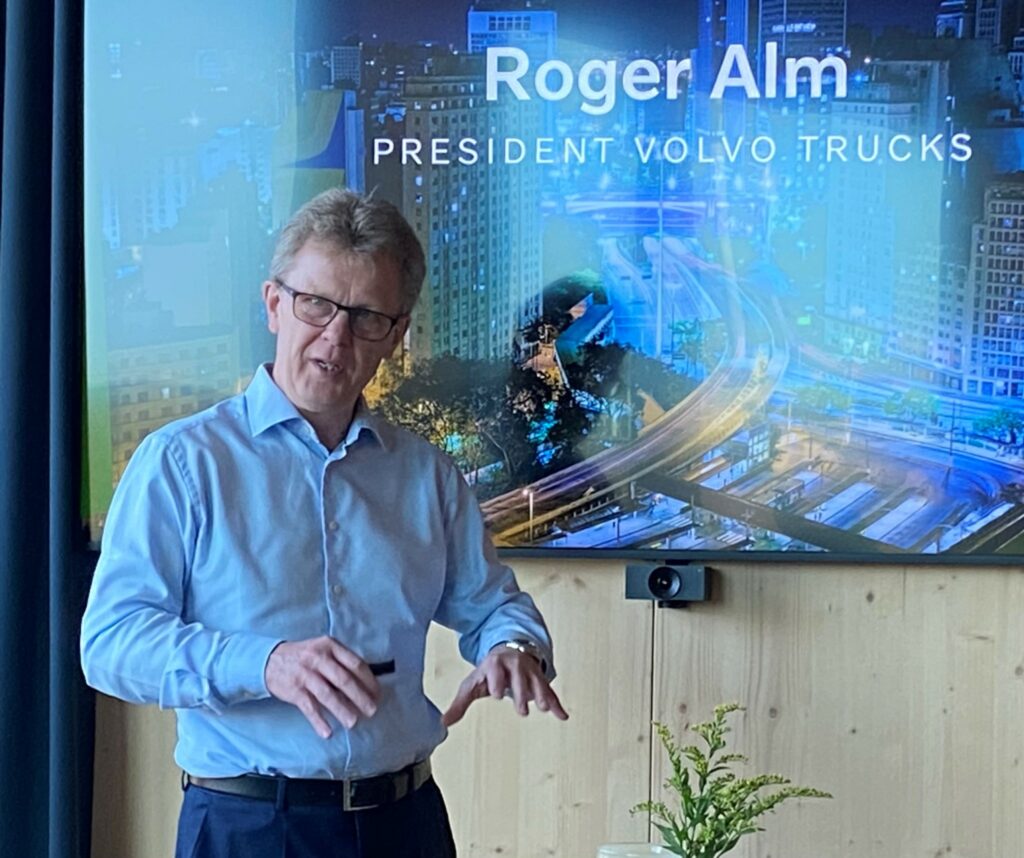Volvo Trucks boss maps out path to zero emissions
These are heady times for Volvo Trucks globally, having come off its largest product update in its history and achieving record global truck sales just two years ago.
But the mission in front of the company, to achieve zero emissions, looms large despite those recent successes. Roger Alm, president of Volvo Trucks, told a gathering of trade press editors in Gothenburg, Sweden, that the company must succeed on this journey for the benefit of future generations.

“Are they interested in what kinds of trucks we’ll drive? Total cost of ownership? Range? They’re not interested at all,” Alm said of today’s youth. “What they are interested in is what we will give them for the future. We need to make this happen.”
Volvo sold a record 147,421 trucks in 2022 and followed it up with a nearly identical tally of 147,252 in 2023. Put together, that’s more than the entire U.S., Canadian and European markets in a given year. Volvo now has some 1.2 million trucks on the road, and yet Volvo’s stated goal is to have an entire rolling population that produces zero emissions by 2050.
Volvo’s latest product launches, the VNL in North America and FH Aero in Europe, achieve 10% and 5% better fuel economy, respectively, than the models they replace. That’s a start. But Alm acknowledged Volvo will need to increase the uptake of its battery-electric and hydrogen fuel-cell-electric offerings as they are rolled out in greater numbers.
And, Alm added, internal combustion engines on fossil-free fuels will also have a role to play. Alm acknowledged 14% of global CO2 emissions come from the transport sector, and 7% from road transport.
The journey is already underway. Volvo has six electric motors in serial production, increasing to eight later this year, and trucks with those engines have collectively traveled 35 million kilometers – equal to 900 laps around the globe.
“It has made a significant reduction in terms of CO2,” Alm said.
But in order to be a truly zero-emission truck maker, Alm said Volvo must also eliminate emissions from its factories and dealerships. “It’s not all about the product and trucks themselves,” he said.
The map Volvo has laid out to get there involves producing 50% zero emission vehicles by 2030 and 100% by 2040. The next 10 years will see older, polluting trucks phased out.
This will come at great expense. “The investments we are doing in R&D today have never been higher,” said Alm.
Have your say
This is a moderated forum. Comments will no longer be published unless they are accompanied by a first and last name and a verifiable email address. (Today's Trucking will not publish or share the email address.) Profane language and content deemed to be libelous, racist, or threatening in nature will not be published under any circumstances.